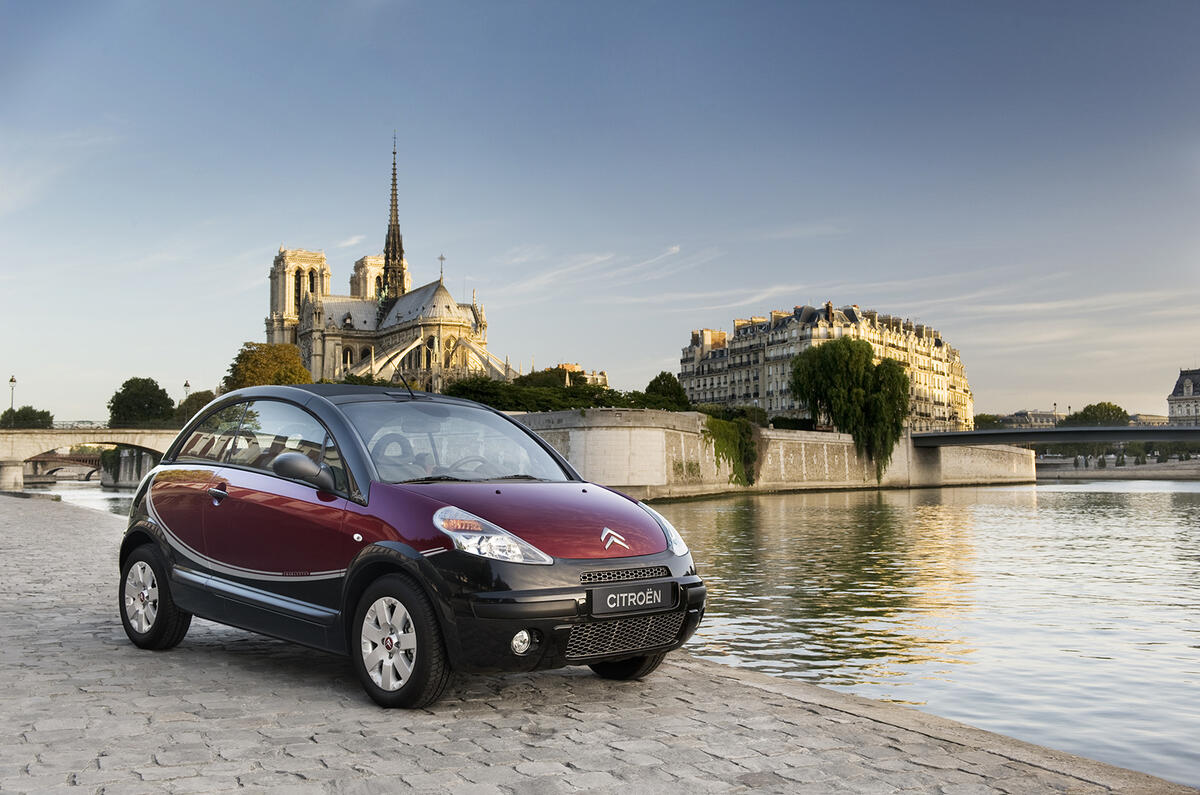Coupé, Targa, cabriolet, pick-up – the Citroën C3 Pluriel was all of these things, and sometimes more. It was also close to being a concept car that you could actually buy, the ingenious flexibility of its bodywork just the kind of thing to be demonstrated by a group of fixed-grin models dancing to overloud music on a motor show press day.
It wasn’t a pretty car, but there was something chubbily appealing in a shape lent extra glamour by the contrast-colour arc of its A-pillars, roof and D-pillars. The Pluriel’s headlights and tail-lights were pretty groovy for their day (2003, since you ask) and those with long memories might spot the 2CV reference in its tail, the large ‘CITROEN’ lettering underlining the fabric-framed rear window a feature of many Deux Chevaux.
The Pluriel’s cabin looked pretty funky from a distance too, the quartet of head restraints, duo-tone dashboard, silver air vents and orange instruments all unusual enough to be redolent of Citroën’s bolder design phases.
Versatility stemmed from a lot more than its electrically retracting fabric roof. Not only did the fabric concertina into a neat pile but could be packaged into the boot once you opened the luggage bay’s drop-down lid.
That gave you a four-seat cabriolet with an unimpeded view to the rear; unlocking the roof side rails left only the windscreen rising above the car’s waistline, although you’d then have the challenge of storing the rails elsewhere. Still more of a challenge would be brazening out the summer squall dumping rain on your head if you were caught fully roofless and rail-less.
Few British Pluriel owners dare remove this bodywork, even if they may already have been prepared for the experience of a light dousing during their roof-up occupation of the car.
Years back, when the Pluriel was very fresh to European streets, I asked an Italian restaurant owner how he was getting on with his.
“It’s okay,” he said, “but it rains inside.” Leaking Pluriel roofs were a big problem in the early days of this model’s seven-year career, although Citroën eventually found ways to staunch the flow.
But other issues have persisted. The bootlid’s three-piece hinge mechanism is weak, a breakage causing the roof to part-open on the side of the failure; the retracting rear side windows sometimes don’t retract; roof slides can break and the cables and sunroof motor sometimes do the same.
Plenty to go wrong, then, and a new roof from a Citroën dealer will cost upwards of £3000. These days, that’s more than three times the price you’ll pay for an ageing but functional Pluriel. Which is why you’ll be lucky to get £100 for a C3 with roof trouble. So this could be a very cheap way into an early 21st-century classic. Or could it?




Join the debate
Add your comment
Yes, Three cars in one, all of them cr@p. Nice idea though, and credit to Citroen for trying something diffferent!